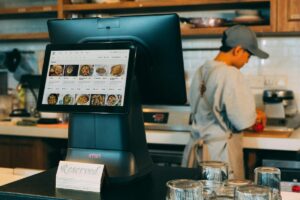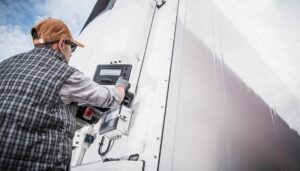How restaurant temperature monitoring saves money and reduces risk
In the competitive landscape of the restaurant industry, maintaining operational efficiency is paramount. One often-overlooked aspect is temperature monitoring, which plays a crucial role in food safety and financial sustainability. This article delves into how effective temperature monitoring can save money and mitigate risks for restaurants, ensuring a smoother operation and enhanced customer satisfaction.
The Importance of Temperature Control
Temperature control is essential in the food service industry. It not only affects the quality and safety of food but also influences operational costs. By maintaining appropriate temperatures, restaurants can prevent food spoilage, reduce waste, and ensure compliance with health regulations.
Temperature monitoring is an invaluable tool for restaurants looking to save money and reduce risks. By ensuring food safety, minimising waste, and enhancing operational efficiency, effective temperature control can lead to significant financial benefits. Furthermore, with advancements in technology, implementing a temperature monitoring system has never been easier or more effective.
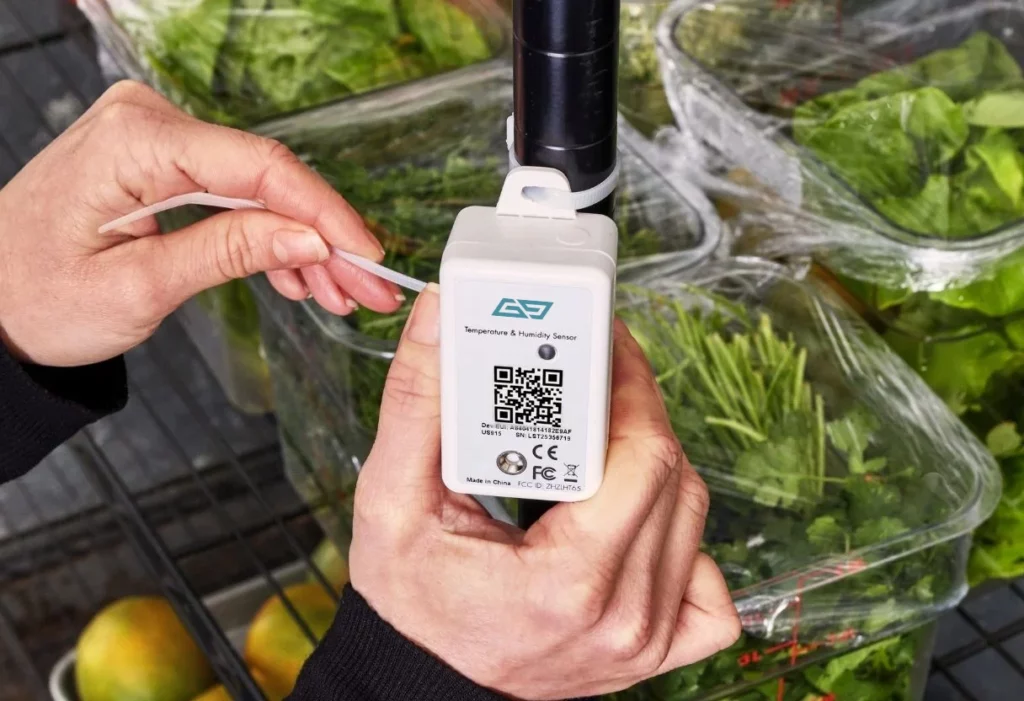
Food Safety and Compliance
Food safety regulations are stringent in Australia, with the aim of protecting public health. Failure to adhere to these regulations can result in hefty fines and even closure. Temperature monitoring systems help ensure that food is stored and served at safe temperatures, significantly reducing the risk of foodborne illnesses.
Regular monitoring of refrigeration units and cooking processes can prevent dangerous temperature fluctuations. For example, keeping meat at the correct temperature can inhibit the growth of harmful bacteria, thereby safeguarding customers and protecting the restaurant’s reputation. Additionally, the implementation of digital temperature logs can streamline compliance checks, making it easier for staff to demonstrate adherence to health standards during inspections. This not only fosters a culture of accountability within the kitchen but also builds trust with patrons who are increasingly concerned about food safety.
Learn more on: Protect perishables with remote temperature monitoring in Australia
Reducing Food Waste
Food waste is a significant concern for restaurants, both ethically and financially. Spoiled food not only represents a loss of revenue but also contributes to environmental issues. By implementing temperature monitoring, restaurants can minimise spoilage. For instance, if a refrigeration unit fails, an alert can prompt immediate action to salvage perishable items, thus reducing waste and saving money.
Moreover, tracking temperature data over time can help identify patterns and potential issues, allowing for proactive measures. This not only preserves inventory but also optimises purchasing decisions, ensuring that restaurants only buy what they need. Furthermore, engaging staff in temperature management practices can enhance their understanding of inventory control, leading to more informed decisions about menu planning and portion sizes. This holistic approach not only reduces waste but also promotes a sustainable dining experience, appealing to the growing number of environmentally conscious consumers.
Cost Savings Through Efficiency
Investing in temperature monitoring systems can lead to significant cost savings. While there may be an initial outlay for technology, the long-term benefits far outweigh these costs. Restaurants can save money in several ways through enhanced efficiency. Learn more about efficiency on https://www.tandfonline.com/doi/full/10.1080/0142159X.2024.2418586?src=
Energy Efficiency
Temperature monitoring systems can optimise energy usage in refrigeration and cooking equipment. By ensuring that these appliances operate within their ideal temperature ranges, restaurants can reduce energy consumption. This not only lowers utility bills but also extends the lifespan of equipment, leading to further savings on repairs and replacements.
Additionally, many modern temperature monitoring systems offer insights into energy usage patterns, allowing restaurant owners to make informed decisions about equipment upgrades or operational changes that can enhance efficiency. For instance, by analysing data trends, a restaurant may discover that certain appliances are overused during peak hours, prompting a strategic shift in scheduling or even the acquisition of additional units to balance the load. This proactive approach can significantly mitigate energy waste and contribute to a more sustainable business model.
Streamlining Operations
Temperature monitoring can streamline kitchen operations by providing real-time data. Staff can quickly identify when a piece of equipment is malfunctioning or when food is at risk of being stored at unsafe temperatures. This immediate feedback allows for swift action, minimising downtime and ensuring that the kitchen runs smoothly.
Furthermore, automating temperature checks reduces the burden on staff, allowing them to focus on other essential tasks. This can improve overall productivity, leading to a more efficient and profitable operation. Moreover, with the integration of temperature monitoring systems, restaurants can enhance their compliance with health and safety regulations. By maintaining accurate records of temperature logs, establishments can easily demonstrate adherence to food safety standards during inspections, thus avoiding potential fines and preserving their reputation. In an industry where customer trust is paramount, such diligence not only safeguards public health but also reinforces the establishment’s commitment to quality and safety.
Technological Advancements in Monitoring
The advent of technology has revolutionised temperature monitoring in restaurants. Traditional methods, such as manual checks, are becoming obsolete as automated systems offer greater accuracy and reliability. These advancements provide numerous benefits that can enhance restaurant operations.
Remote Monitoring Solutions
With the rise of IoT (Internet of Things), many temperature monitoring systems now offer remote monitoring capabilities. This allows restaurant owners and managers to keep an eye on their equipment from anywhere, at any time. Alerts can be sent directly to mobile devices if temperatures deviate from the set range, enabling quick responses to potential issues.
Remote monitoring not only enhances safety but also provides peace of mind. Restaurant owners can rest assured that their food safety measures are being upheld, even when they are not on-site. To read more about safety click here.
Data Analytics for Continuous Improvement
Modern temperature monitoring systems come equipped with data analytics features that can provide valuable insights into operational efficiency. By analysing temperature data over time, restaurants can identify trends, such as peak usage times or recurring equipment failures. This information can inform better decision-making regarding staffing, equipment maintenance, and purchasing practices.
Furthermore, data analytics can help restaurants comply with health regulations by providing a clear record of temperature logs. In the event of an inspection, having this data readily available can demonstrate compliance and bolster the restaurant’s credibility.
Mitigating Risks and Enhancing Reputation
In the restaurant business, reputation is everything. A single incident of foodborne illness can tarnish a restaurant’s image and lead to a significant loss of customers. Effective temperature monitoring is a proactive measure that can mitigate these risks and enhance a restaurant’s reputation.
Building Customer Trust
Customers are increasingly aware of food safety practices and are likely to choose establishments that prioritise these measures. By implementing robust temperature monitoring systems, restaurants can demonstrate their commitment to food safety. This transparency can build trust with customers, encouraging repeat business and positive word-of-mouth recommendations.
Moreover, showcasing food safety practices through marketing channels can attract health-conscious diners, further enhancing the restaurant’s reputation in a competitive market.
Insurance Benefits
Many insurance providers offer lower premiums for restaurants that implement comprehensive food safety measures, including temperature monitoring. By demonstrating a commitment to maintaining safe food handling practices, restaurants can potentially reduce their insurance costs. This not only saves money but also provides an added layer of protection against potential liabilities.
Implementing a Temperature Monitoring System
For restaurants looking to implement a temperature monitoring system, several key considerations should be taken into account. A well-planned approach can ensure that the system meets the specific needs of the establishment while maximising its benefits.

Choosing the Right System
When selecting a temperature monitoring system, it is essential to consider factors such as scalability, ease of use, and integration capabilities with existing systems. The right solution should be able to grow with the restaurant and adapt to changing needs.
Additionally, it is crucial to choose a system that offers reliable alerts and notifications. This ensures that staff can respond promptly to any temperature deviations, minimising risks and protecting food safety.
Training Staff
Implementing a new temperature monitoring system requires adequate staff training. Employees should be familiar with how to use the technology, understand the importance of temperature monitoring, and know how to respond to alerts. Regular training sessions can reinforce these practices and ensure that all staff members are on the same page.
Moreover, fostering a culture of food safety within the restaurant can encourage staff to take ownership of their roles in maintaining safe practices. This collective effort can significantly enhance the effectiveness of the temperature monitoring system.
Conclusion
As the restaurant industry continues to evolve, those who prioritise temperature monitoring will not only protect their bottom line but also build a reputation for excellence in food safety. In a world where customer trust is paramount, investing in temperature monitoring is not just a smart choice; it is a necessary step towards long-term success.
Protect perishables with remote temperature monitoring in Australia
In the vast and diverse landscape of Australia, maintaining the quality of perishable goods is a significant challenge for businesses across various sectors. From the bustling markets of Sydney to the remote outback, ensuring that food, pharmaceuticals, and other temperature-sensitive products are kept at optimal conditions is paramount. Remote temperature monitoring systems have emerged as a vital solution, offering real-time data and alerts that help protect these valuable items from spoilage and loss.
The Importance of Temperature Control
Temperature control is crucial for a multitude of industries. In the food sector, for instance, improper temperature management can lead to foodborne illnesses, wastage, and financial losses. Similarly, pharmaceuticals require strict temperature regulation to ensure efficacy and safety. With Australia’s unique climate, which ranges from tropical in the north to temperate in the south, the need for reliable temperature monitoring becomes even more pronounced.
In a country as vast and diverse as Australia, protecting perishables through effective temperature monitoring is essential for businesses across various sectors. Remote temperature monitoring Australia systems offer a reliable solution to ensure that food, pharmaceuticals, and other temperature-sensitive products are kept within safe limits. With real-time data, cost savings, and enhanced customer trust, these systems are not just an investment in technology; they are an investment in the future of a business.
Food Safety Standards
Australia has stringent food safety standards in place, governed by the Food Standards Australia New Zealand (FSANZ). These regulations dictate that food must be stored and transported at specific temperatures to prevent contamination and spoilage. Remote temperature monitoring systems play a crucial role in helping businesses comply with these regulations. By providing continuous monitoring, these systems ensure that any deviations from the required temperature range are promptly addressed. Furthermore, the implementation of these advanced monitoring systems not only safeguards public health but also enhances consumer confidence in the food supply chain. With increasing public awareness about food safety, businesses that prioritise temperature control are likely to see a positive impact on their reputation and customer loyalty.
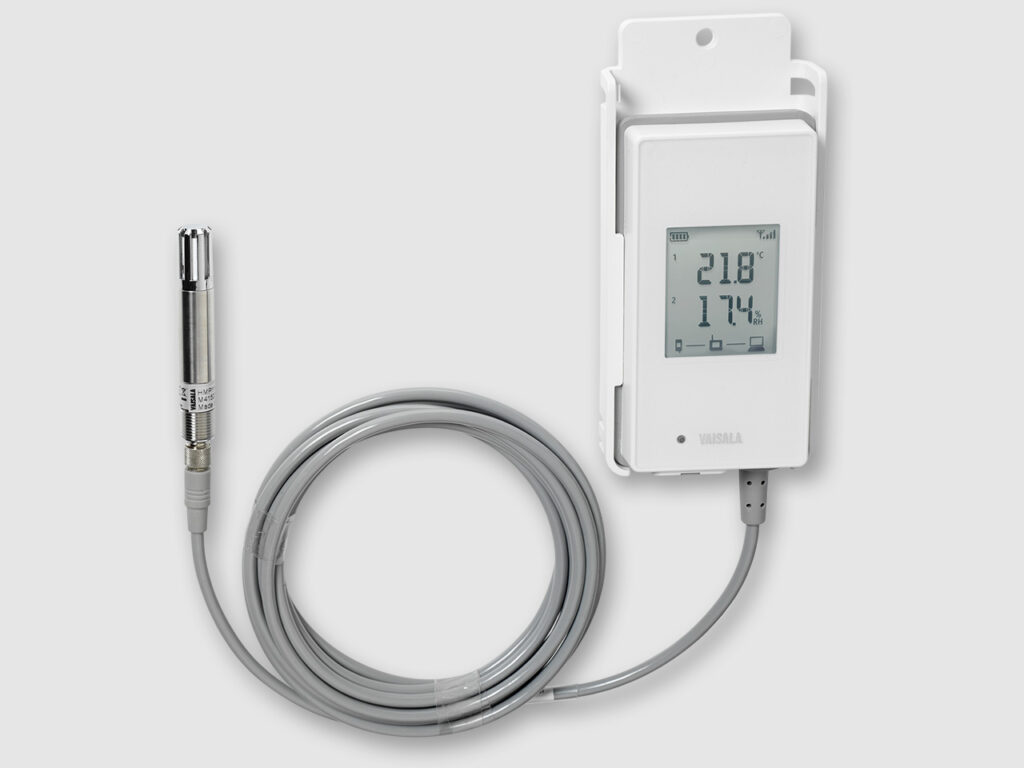
Pharmaceutical Requirements
In the pharmaceutical industry, temperature control is not just a regulatory requirement; it is a matter of life and death. Vaccines, insulin, and other critical medications can lose their potency if not stored correctly. Remote monitoring systems help pharmacies and healthcare providers maintain the integrity of these products, ensuring they remain effective for patients who rely on them. The ability to receive instant alerts about temperature fluctuations can make all the difference in emergency situations. Additionally, the rise of telehealth services and home healthcare means that the demand for effective temperature control is expanding beyond traditional settings. As patients receive medications at home, ensuring that these products are stored at the correct temperature becomes paramount, further emphasising the need for robust monitoring solutions in every aspect of healthcare delivery.
Read more on: How restaurant temperature monitoring saves money and reduces risk
How Remote Temperature Monitoring Works
Remote temperature monitoring systems utilise advanced technology to track and record temperature data in real-time. These systems typically consist of sensors, data loggers, and software that work together to provide a comprehensive overview of temperature conditions. By employing these technologies, businesses can ensure that their products are stored and transported under optimal conditions, thereby reducing spoilage and maintaining quality.
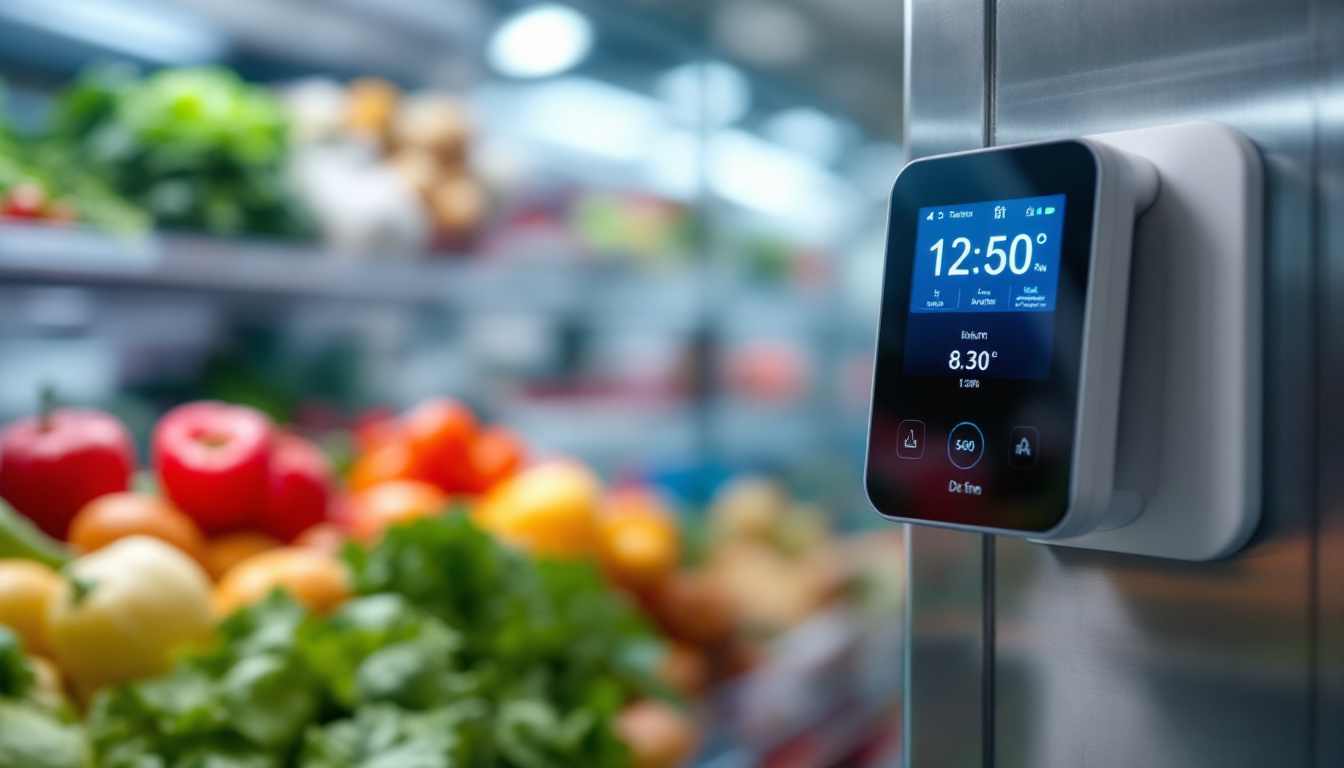
Components of a Remote Monitoring System
The core components of a remote temperature monitoring system include:
- Temperature Sensors: These devices are placed in storage areas or transport vehicles to measure the ambient temperature continuously. They are often designed to withstand harsh environments, ensuring reliable performance in various conditions.
- Data Loggers: These devices collect and store temperature data over time, allowing for historical analysis and reporting. Many modern data loggers are equipped with wireless capabilities, enabling seamless data transfer to central systems without the need for manual downloads.
- Alert Systems: Most systems come equipped with alert functionalities that notify users via SMS or email when temperatures fall outside the designated range. This feature is particularly crucial for industries such as pharmaceuticals and food services, where temperature deviations can lead to significant losses.
Data Analysis and Reporting
One of the significant advantages of remote temperature monitoring is the ability to analyse data over time. Businesses can generate reports that highlight trends, identify potential issues, and improve overall operational efficiency. This data-driven approach not only aids in compliance but also helps in making informed decisions regarding inventory management and supply chain logistics. Furthermore, the integration of machine learning algorithms into these systems is beginning to revolutionise how data is interpreted, allowing for predictive analytics that can foresee potential temperature fluctuations based on historical patterns. Find more about management on https://www.aku.edu/mcpk/Pages/mshm.aspx
Moreover, the implementation of remote temperature monitoring can significantly enhance customer trust and satisfaction. For instance, companies in the food industry can provide transparency by sharing real-time temperature data with consumers, assuring them that their products have been handled with the utmost care. This level of transparency not only strengthens brand loyalty but also positions businesses as leaders in quality assurance within their respective markets. As technology continues to evolve, the potential applications and benefits of remote temperature monitoring systems are likely to expand, paving the way for even more innovative solutions in various sectors.
Benefits of Remote Temperature Monitoring
The implementation of remote temperature monitoring systems offers numerous benefits that can significantly impact a business’s bottom line.
Real-Time Monitoring
One of the most significant advantages of remote monitoring is the ability to receive real-time updates. Businesses can monitor temperature conditions 24/7, allowing for immediate action if any issues arise. This proactive approach minimises the risk of spoilage and ensures that products remain safe for consumers.
Cost Savings
While the initial investment in remote temperature monitoring technology may seem substantial, the long-term savings can be considerable. By preventing spoilage and ensuring compliance with safety regulations, businesses can avoid costly losses. Additionally, the data collected can lead to more efficient operations, further enhancing profitability.
Enhanced Customer Trust
In today’s market, consumers are increasingly concerned about the safety and quality of the products they purchase. By implementing remote temperature monitoring systems, businesses can demonstrate their commitment to quality and safety. This transparency can enhance customer trust and loyalty, ultimately leading to increased sales and a stronger brand reputation. Click here to find more about quality.
Choosing the Right System
With various remote temperature monitoring solutions available in Australia, selecting the right system can be daunting. Several factors should be considered to ensure the chosen system meets the specific needs of a business.
Scalability
As businesses grow, their monitoring needs may change. It is essential to choose a system that can scale with the business. This includes the ability to add more sensors or integrate with existing software systems seamlessly.
Ease of Use
The user interface of the monitoring system should be intuitive and straightforward. A complicated system can lead to errors and inefficiencies, negating the benefits of the technology. Look for systems that offer user-friendly dashboards and easy access to data and alerts.
Support and Maintenance
Reliable customer support is crucial when implementing any new technology. Ensure that the provider offers comprehensive support, including installation, training, and ongoing maintenance. This support can significantly impact the effectiveness of the monitoring system.
Case Studies: Success Stories in Australia
Several Australian businesses have successfully implemented remote temperature monitoring systems, yielding impressive results.
Food Distribution Companies
A leading food distribution company in Melbourne faced challenges with maintaining the temperature of its refrigerated trucks. After implementing a remote monitoring system, the company reported a 30% reduction in spoilage rates. The real-time alerts enabled drivers to address temperature fluctuations immediately, ensuring that products arrived at their destinations in optimal condition.
Pharmaceutical Suppliers
A pharmaceutical supplier in Brisbane adopted a remote temperature monitoring solution to comply with stringent regulatory requirements. By utilising the system, the company improved its compliance rate to 100%, avoiding potential fines and enhancing its reputation in the industry. The data collected also allowed for better inventory management, reducing waste and increasing profitability.
Conclusion
As the demand for quality and safety continues to rise, businesses that adopt remote temperature monitoring will be better positioned to thrive in an increasingly competitive market. By prioritising the protection of perishables, companies can safeguard their reputation, ensure compliance, and ultimately contribute to a healthier and safer Australia.

